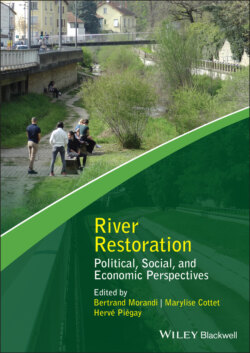Читать книгу River Restoration - Группа авторов - Страница 30
1.4.2.3 A political look at the place of science in river restoration practice
ОглавлениеIn political approaches to river restoration, scientists are considered as fully fledged protagonists of restoration policies and projects. Because of their knowledge, they are consulted in the development of projects and are often involved in their evaluation. Some authors critically analyze this expert stance (e.g. Lave et al. 2010; Lave 2016; Fox et al. 2017). For them, researchers are not immune to the influence of the political, economic, and social forces that influence the politics of restoration (Light and Higgs 1996). Scientific production is rooted in multiple values that have a particular weight in the practice of river restoration because of the credit generally given to scientific knowledge and the expert. Many publications interested in the political dimension of restoration aim to highlight these values and to discuss the ethical responsibility of researchers as they engage in dialogue with society. Among the avenues being explored, Drouineau et al. (2018) point to the importance of multidisciplinarity in this science–society interface. According to the authors, the crossing of disciplinary viewpoints is an essential approach to address any problem in an integrated manner, and to take into account its various facets. Other publications put scientific knowledge into perspective by comparing it with other more vernacular forms of knowledge (e.g. Woelfle‐Erskine 2017; Hong and Chun 2018). They contribute to relativizing the weight of scientific knowledge in the decision‐making process and make the scientist a stakeholder among others (Yun 2014). These approaches therefore reflect on processes for engaging local communities and citizens at large in decision‐making processes (e.g. Heldt et al. 2016; Fox et al. 2017; Edwards et al. 2018). To this end, publications consider and evaluate the merits of alternative approaches for the production of knowledge in the field of river restoration. Pahl‐Wostl (2006) insists, for example, on the principle of co‐construction of knowledge to promote social learning in the field of river restoration. Restoration projects involving participatory science (e.g. Edwards et al. 2018) or collaborative research (e.g. Fox et al. 2017) are, however, rare. Fox et al. (2017, p. 532) showed that “spaces for the inclusion of new meanings, processes, and outcomes in restoration” were created through collaborations between researchers and indigenous communities. They have contributed to the recognition that the standards of indigenous communities are on a par with those of Western countries. According to the authors, however, this recognition is only one step on the long road to rebalancing power relationships in river restoration governance processes.
